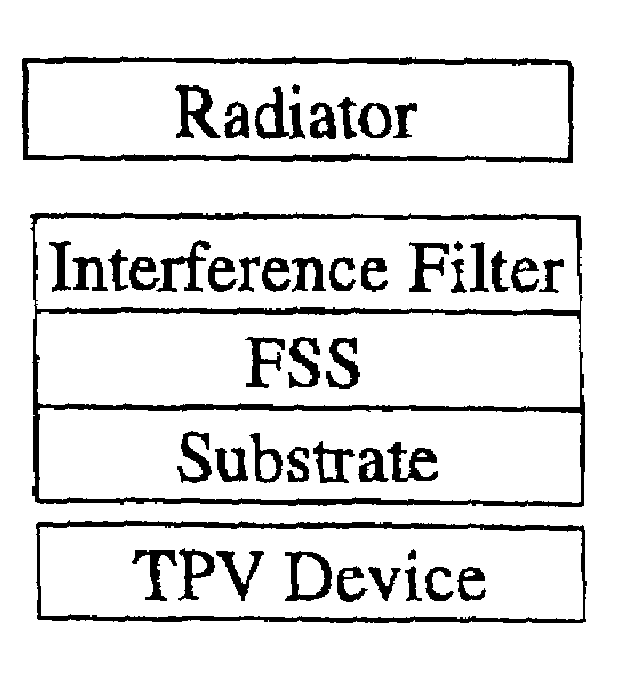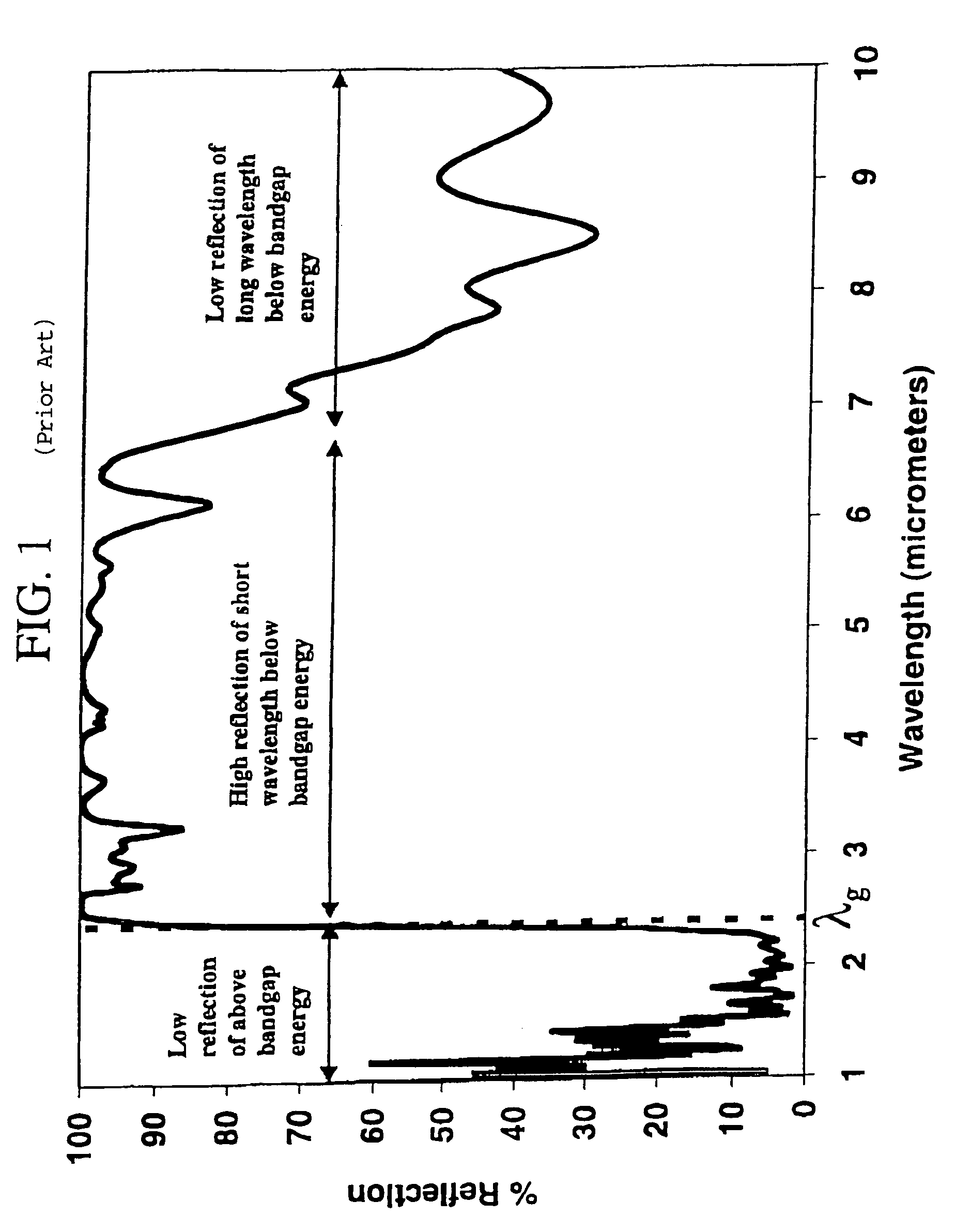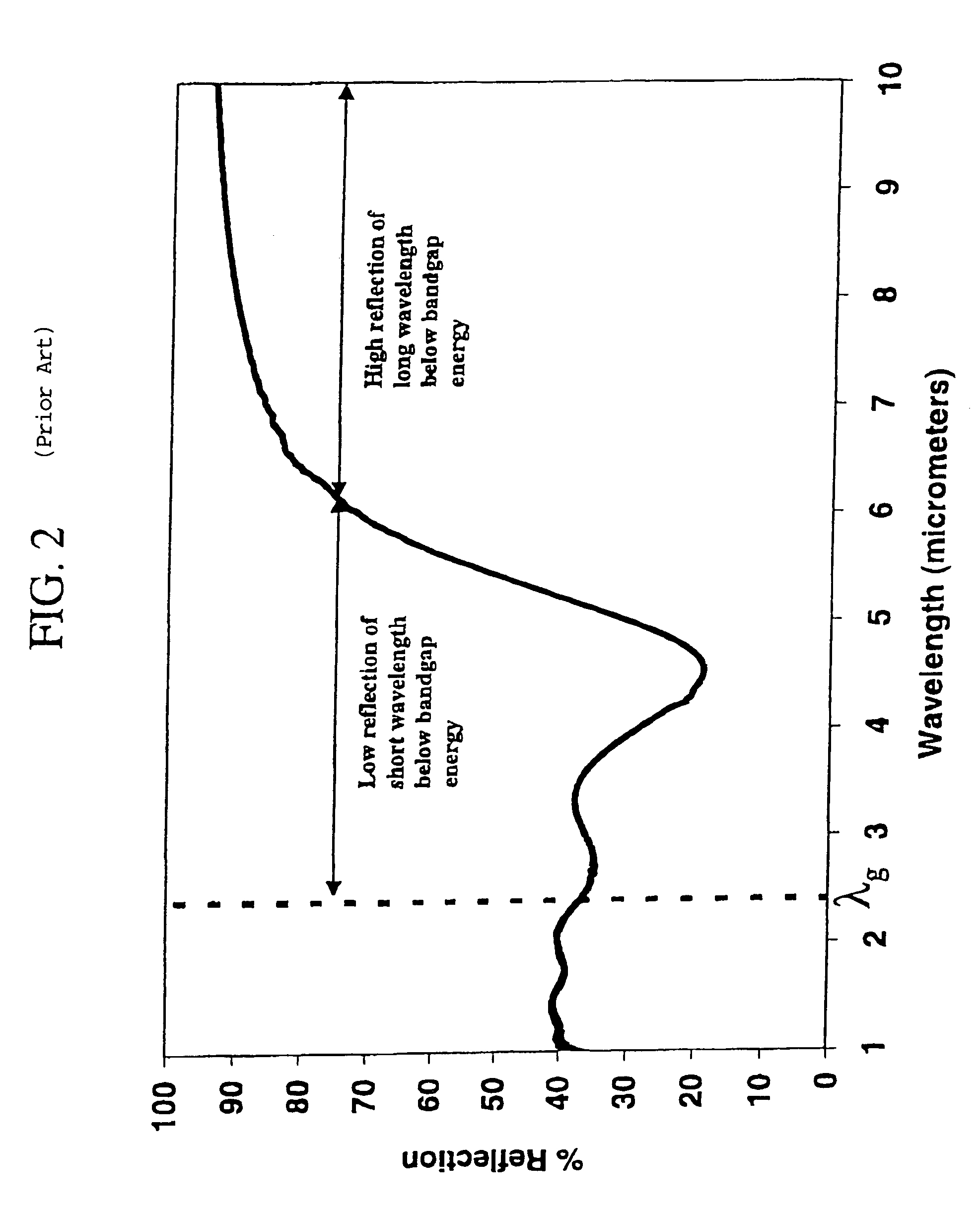Tandem filters using frequency selective surfaces for enhanced conversion efficiency in a thermophotovoltaic energy conversion system
a technology of thermophotovoltaic energy conversion and frequency selective surfaces, applied in the field of filters, can solve the problems of reducing the power density of the electrical output surface, parasitically absorbing heat, and reducing the above bandgap energy incident on the tpv device, and achieves high reflection, and high transmission of above bandgap energy
- Summary
- Abstract
- Description
- Claims
- Application Information
AI Technical Summary
Benefits of technology
Problems solved by technology
Method used
Image
Examples
Embodiment Construction
[0031]The present invention constitutes a novel combination of a frequency selective surface and an interference filter in a tandem configuration to overcome the limitations of each of the individual components. In the preferred embodiment of the present invention, the typical interference filter is disposed on top of the typical FSS such that photons from the radiator are first incident on the interference filter. In the preferred embodiment of the present invention, the FSS tandem filter may be fabricated in four configurations. In the first configuration, illustrated in FIG. 7A, the typical FSS is fabricated on a substrate and the typical interference filter is deposited directly on top of the typical FSS filter. The resulting FSS tandem filter is then mounted to a TPV device. In a second configuration, illustrated in FIG. 7B, the typical interference filter is deposited on the opposite side of the substrate that the typical FSS filter is fabricated upon and then the resulting FS...
PUM
 Login to View More
Login to View More Abstract
Description
Claims
Application Information
 Login to View More
Login to View More - R&D
- Intellectual Property
- Life Sciences
- Materials
- Tech Scout
- Unparalleled Data Quality
- Higher Quality Content
- 60% Fewer Hallucinations
Browse by: Latest US Patents, China's latest patents, Technical Efficacy Thesaurus, Application Domain, Technology Topic, Popular Technical Reports.
© 2025 PatSnap. All rights reserved.Legal|Privacy policy|Modern Slavery Act Transparency Statement|Sitemap|About US| Contact US: help@patsnap.com



